Best Hotel in Atacama: Awasi Lodge
OUR REVIEW
The Awasi Atacama, a Relais & Chateaux hotel, is situated in the stunning desert landscape of San Pedro de Atacama, Chile. With its rootsy charm and proximity to the authentic town life, it offers a unique front-row view of one of the most captivating and surreal landscapes on earth.
Guests at the hotel can enjoy dining and drinks under the starry night sky, with uninterrupted views of the world’s clearest skies. Each of the 10 rooms comes with a private professional guide and a 4×4 vehicle for fully customized exploration of the Atacama Desert. The hotel offers over 47 different full-day and half-day tours, enabling guests to discover the rich cultural and natural history of the region on foot, by Jeep, on horseback, by bike, or a combination of these methods. All meals and guided excursions are included, ensuring guests have an unforgettable and personalized experience.

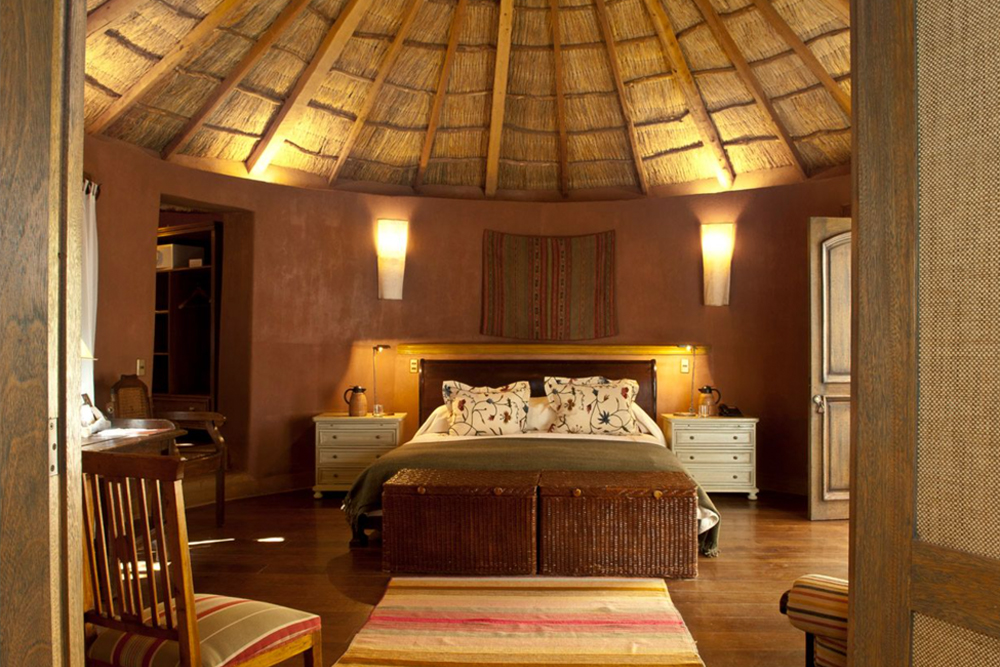
About the Tours and Activities in Atacama Desert with Awasi
The excursions offered by Awasi Atacama can be customized according to your preferences and interests. The duration of each activity depends on the pace of the trek and the stops preferred by guests. These are the most popular tours to do in Atacama.
Zone A - Atacama Salt Flats
This tour takes place at an altitude of 2,400 meters above sea level and covers the low basin characterized by flat and regular surface. The notable geological events in this area are the Cordillera de la Sal mountain range and the Salar de Atacama salt flat. San Pedro de Atacama, known as the archaeological capital of Chile, has two significant archaeological sites, Pukará de Quitor and Tulor, which guests can visit along with the town square and the church.
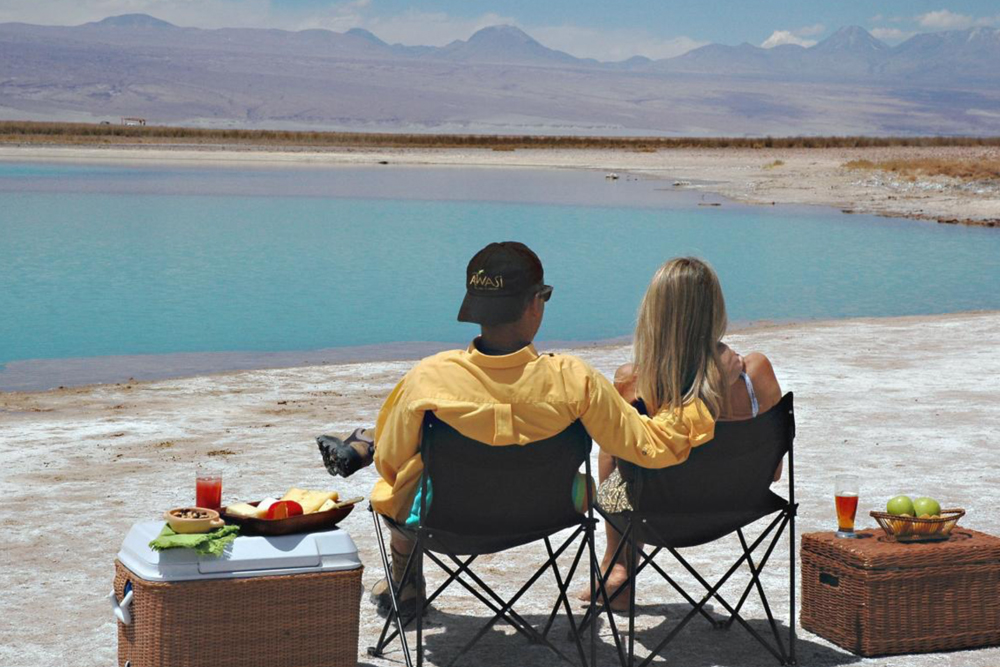
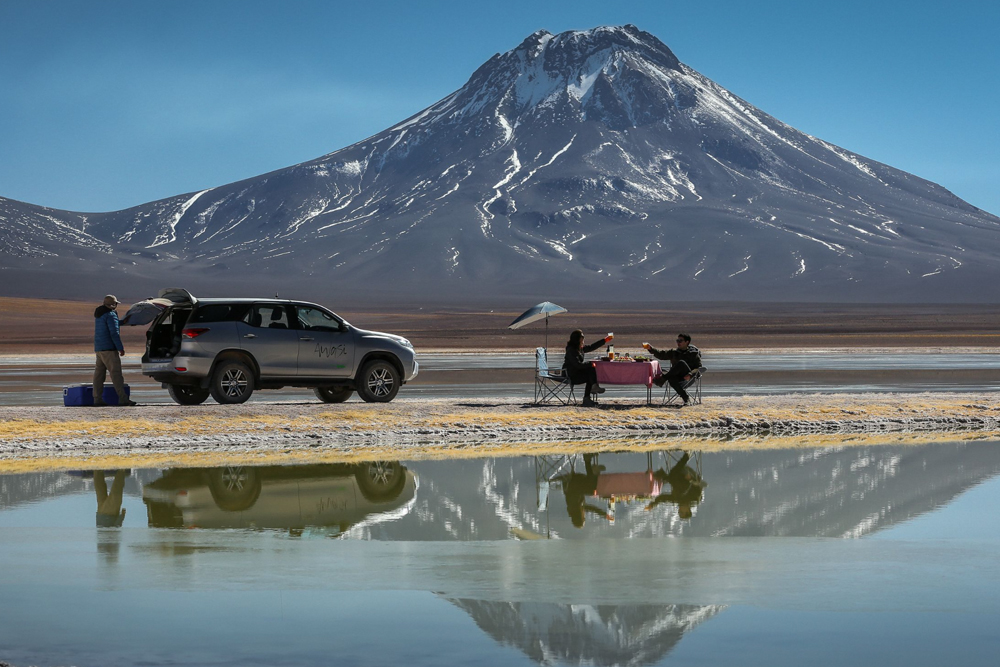
Ayllus
Ayllus, the Quechua word for family, refers to how people were organized in the Tawantinsuyu, the Inca kingdom, for collective work tasks. The ethnic Lickan Antay’s peaceful agrarian way of life has been preserved for millennia, and the 15 Ayllus surrounding the old town represent this lifestyle. Guests can visit cultivation fields and observe the irrigation channels, native and introduced flora, and fauna.
Kari Canyon
Valle de la Luna or the Valley of the Moon is the most famous natural attraction of the Antofagasta region. It is located in the Cordillera de la Sal and is characterized by gigantic sedimentary rock walls with red and white tones. The Kari Canyon, less popular but equally beautiful, has a serpentine path of water and copper ores.
Difficulty: Medium – Duration: 3:00 – By car and on foot
Barrancas
Death Valley offers a panoramic view of San Pedro, the Andes, and the Cuenca de Atacama basin. Piedra de la Coca has rock art engravings of animals and people, a testament to the commercial routes built in prehistoric times. Garganta del Diablo, with its walls of clay and gypsum, has fantastic views behind every nook and cranny of the route. Katarpe, located north of the town, has the remains of the Kallanka (Inca center), surrounded by the Cordillera de la Sal mountains and the salty waters of the river.
Difficulty: Easy – Duration: 3:00 – By car and on foot / horse
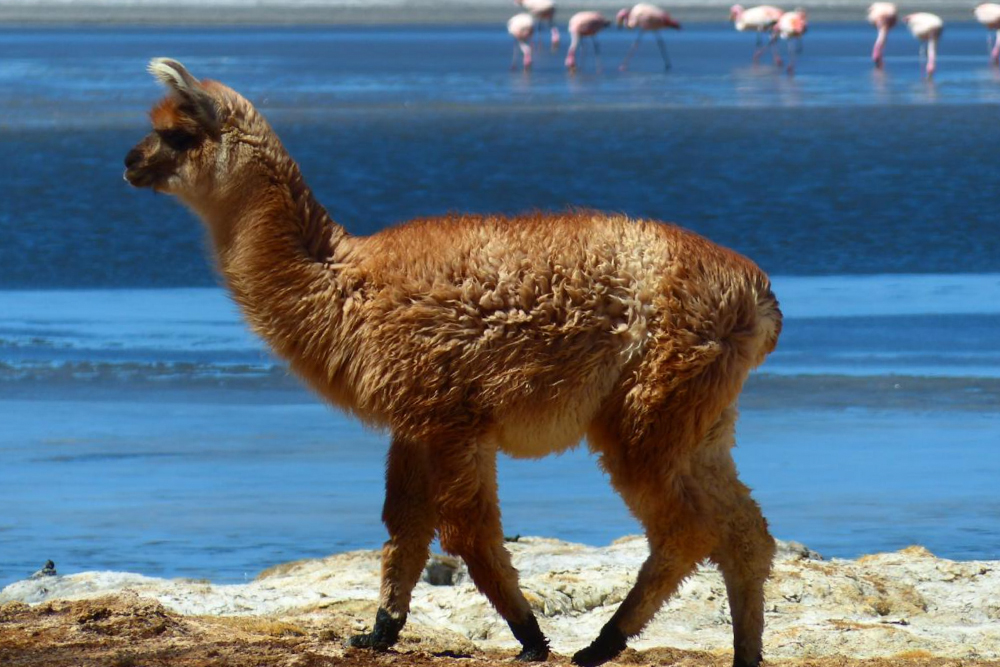
Piedra de la Coca
Thousands of years ago, the people of San Pedro created an extensive trade network that extended to the coast and the Bolivian Altiplano. Today, evidence of their presence can be seen in the form of enigmatic rock carvings of animals and people. Visitors can walk in the same paths as these prehistoric inhabitants, and admire not only the fascinating rock art but also the stunning natural formations of the Cordillera de la Sal.
Difficulty: Medium – Duration: 3:00 – By car and on foot / bicycle / horse
Garganta del Diablo
The Cordillera de la Sal boasts an otherworldly landscape reminiscent of the red planet, with dry stream beds that may deceive with their serene appearance until the rainy season arrives. Among these streams, one stands out for its massive walls of clay and gypsum that offer breathtaking vistas at every turn. This mesmerizing route culminates at the imposing Devil’s Ravine, also known as Throat of the Devil, where a grand dry waterfall awaits. However, caution is advised during the rainy season as the otherwise tranquil streams can become treacherous.
Difficulty: Medium – Duration: 3:00 – By car and on foot / bicycle / horse
Katarpe
In the sector north of the town, following the course of the Río San Pedro river, you come to the Katarpe sector. Here officials of the Tawantinsuyu (Inca kingdom) were assigned to administer the Lickan Antay, collecting taxes and recruiting people to form compulsory armies for the Inca. The remains of the Kallanka (Inca center) can still be seen, surrounded by the majestic Cordillera de la Sal mountains and the salty waters of the river.
This destination can be combined with other excursions, like La Garganta del Diablo or La Piedra de la Coca.
Difficulty: Easy – Duration: 2:30 – By car and on foot / bicycle / horse
Cejar Lagoon
The Salar de Atacama, with its unique morphology, is the third largest salt flat globally, shaped by the harsh aridity of the climate. Surprisingly, at its core lie deep lakes, having high salinity and hosting an array of peculiar and stunning bird species, along with salt-tolerant plants. Visitors often explore Cejar and Piedras lakes, where one can relish a dead sea-like bathing experience, and admire the breathtaking Laguna Tebinquiche and Los Ojos del Salar, both offering spectacular scenic views.
Difficulty: Easy – Duration: 3:00 – By car and on foot / bike
Toconao and Sóncor Sector
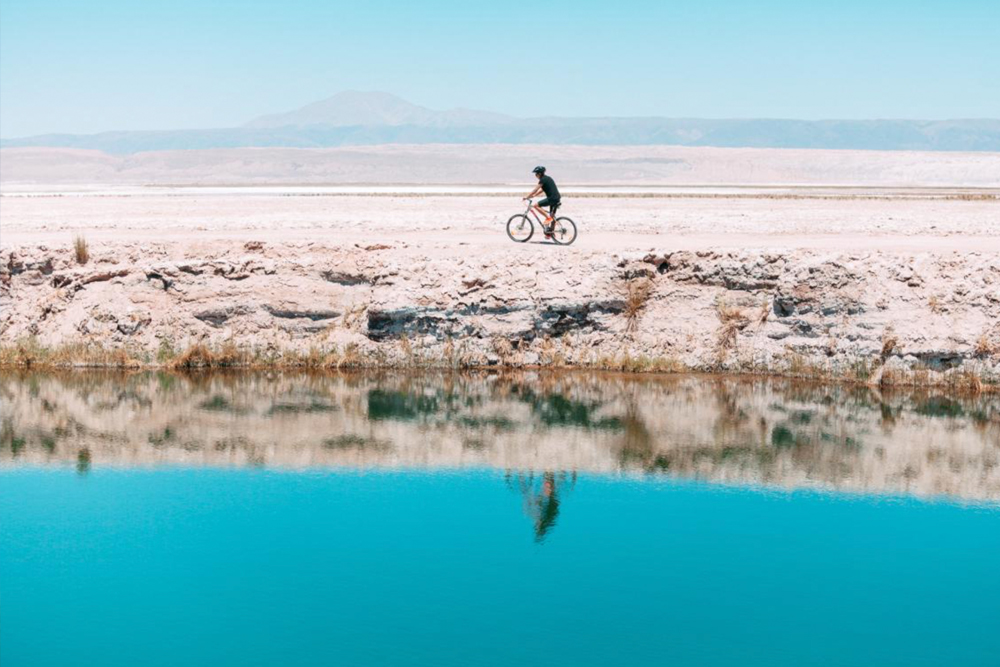
Zone B - Intermediate Ravines
The region situated at an altitude range of 3,000 to 3,800 meters between the salt flats and volcanic peaks is known as the intermediate Ravines. This area is predominantly composed of solidified volcanic rocks and serves as a conduit for the small rivers of the Altiplano to flow down towards the desert.
Matancilla and Yerbas Buenas
There are unique places on Earth, due to their unusual geography and conditions, or because they represent something original in human history. On this excursion the two are combined ideally: the site of Yerbas Buenas contains an extraordinary wealth of petroglyphs from the Lickan Antay culture. It is also in close proximity to the Matancilla valley, where the geological history of the desert is laid bare in a symphony of colors within the rock.
Difficulty: Easy – Duration: 3:30 – By car and on foot / bike
Guatin
Between the dryness of the salt flats and the impressive Puna are the intermediate ravines. That of the Vilama river is counted among the most beautiful and interesting, where only the Cardón or Pasakana cactus grow. There are two possible routes to be taken from Guatin: you can ascend towards the Puritama Hot Springs or descend to the archaeological site of Gatchi. Both routes present a similar duration and level of difficulty.
Difficulty: Medium – Duration: 3:00 – By car and on foot / bike
Puritama Hot Springs
The volcanic activity of the Andes always takes a leading role due to the beauty of its summits, the eruptions that revitalize the richness of the soil, or the endless thermal springs that it produces.
Among these geothermal features, the Puritama river is particularly noteworthy, springing from the volcanic rock at a temperature of 37ºc and which is ideal for bathing. This location has high class facilities and is organized in a series of handcrafted pools.
Difficulty: Easy – Duration: 3:00 – By car and on foot / bike

Talabre
The Atacama Desert is renowned for its authentic and untouched locations that embody the traditional and meditative way of life. Talabre is a quintessential example of this Atacameño spirit, where visitors can witness ancient cultivation terraces that are still in use today. Additionally, the Patos and Quezala ravines are home to ancestral petroglyphs, all while the active Lascar volcano provides a dramatic backdrop to this cultural and historical experience.
Difficulty: Easy – Duration: 3:30 – By car and on foot / bike
Zone C - Puna
Above 4,000 meters altitude there is an important increase in precipitation which results in green meadows and highland wetlands, called bofedales. Most of the fauna and flora of the region is concentrated in this area.
*It requires altitude acclimatization prior to your visit and is not recommended for visitors who suffer from heart disease.
Machuca
The Machuca village is one of the few located above 4,000 meters which is still inhabited, in the region of Antofagasta. The ascent in a 4×4 truck is both quick and safe and allows one to almost touch the sky, in a landscape much more fertile and rich in animals than the desert of San Pedro. There are excellent opportunities for bird watching in the town’s environs.
Difficulty: Easy – Duration: 3:30 – By car and on foot
Géisers del Tatio
The Tatio geysers are a major tourist attraction in the region, boasting the largest geothermal field in the southern hemisphere. The site offers a diverse range of features, from small fumaroles and bubbling springs to impressive water fountains known as geysers.
As you travel through the area, you can catch glimpses of various wildlife, including vicuñas, foxes, wild donkeys, and even flamingos. You can take in the panoramic views from the comfort of your vehicle, or explore the area on foot, taking advantage of the many trails and alternative routes available. Additionally, visitors can enjoy a relaxing soak in an artificial swimming pool that has been specially installed within the geothermal field.
Difficulty: Medium – Duration: 7:00 – By car and on foot
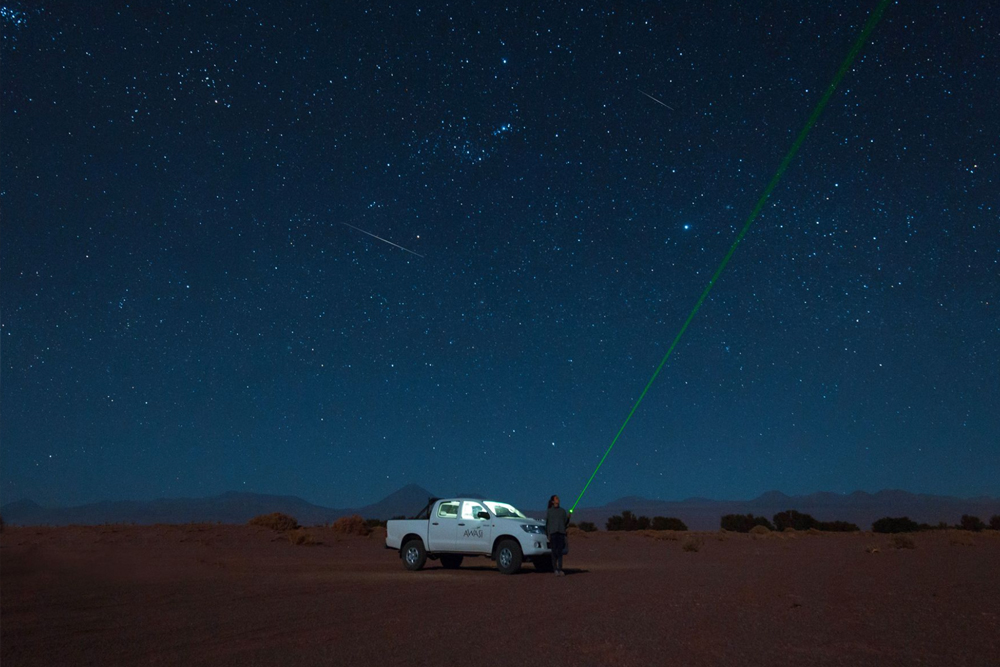
Alto Loa Villages
At the beginning of the Altiplano there are some villages that still keep to the thousand-year old traditions of the Lickan Antay culture, such as Caspana and Chiu-Chiu. Caspana is located at almost 4,000 meters altitude and preserves one of the oldest cultivation systems in the region, within a privileged landscape that combines desert, oasis and the altiplano. Chiu-Chiu was regarded as the capital of Atacama la Baja, or Lower Atacama, counterpart to the power centered in San Pedro, and boasts the oldest church in Chile, the San Francisco de Chiu-Chiu Church.
Difficulty: Easy – Duration: 7:00 – By car and on foot
Machuca and Río Grande
Among the multiple commercial routes frequented by the Lickan Antay in their age of glory, a very traditional one is still used in our times. This follows the shepherds’ route between the villages of Machuca and Río Grande, used to move the livestock to higher ground in summertime, then to bring them back down before the snows. The trail starts in a distinctly Altiplano landscape, passing through many levels into an intermediate ravine area.
Difficulty: Medium-High – Duration: 7:30 – By car and on foot
Lagunas Altiplánicas
This tour encompasses the Toconao and Sóncor areas, along with a visit to one of the region’s top tourist attractions: the Miscanti and Miñiques lakes. Located at an elevation of 4,500 meters, these lakes are a magnificent sight to behold. The larger of the two, Miscanti, offers breathtaking views of the Andean volcanoes, as well as herds of vicuñas and horned coots. The smaller lake, Miñiques, provides a stunning view of the Miñiques volcano, the Callejón Varela, and a diverse range of species.
Difficulty: Easy – Duration: 7:00 – By car and on foot
Altiplano Salt Flats
Situated almost on the border with Argentina are the salt flats of Aguas Calientes and Tuyactu. Both are wrapped in absolute silence, mainly thanks to their low visitor numbers. The Salar de Aguas Calientes has a splendid view of the surrounding volcanoes and reddish waters. The Laguna de Tuyactu is, in contrast, a mirror of salt water, which looks like snow in the dry season.
Difficulty: Medium – Duration: 7:00 – By car and on foot
Tara Salt Flats
On the country’s border, literally, is a simply impressive water system: the Salar de Tara. Almost 5.000 meters in altitude, it is possible to admire a sky bluer than any other, surrounded by colorful mountains and a startling silence. On the salt flat there are llamas, vicuñas, flamencos, goldfinches, cholulos and many other species, and it is crowned by the imposing Monjes de la Pacana(Pacana Monks), columns of volcanic rock sculpted by erosion.
Difficulty: Medium – Duration: 7:30 – By car and on foot
Salar de Kapur and Salar de Talar
One of the most rewarding ways to explore the Altiplano is on foot, despite the challenges and difficulties that come with it. This route is one of the simpler ones, taking you through the salt flats of Kapur and Talar, and offering breathtaking views of the southern territories of the “Abrazo de Mendoza”.
Difficulty: High – Duration: 8:00 – By car and on foot
Zone D - High Mountain
The high summits of the central Andes represent an undeniable attraction for the imagination, reaching up to an altitude of some 6,000 meters. This requires appropriate physical and mental preparation, as well as acclimatization to the lack of oxygen. Most of the summits close to the hotel are between 5,000 and 5,700 meters.
Saciel Volcano
Located on the border of Chile and Bolivia, this volcano offers a unique experience as you pass by border signs during the ascent, surrounded by a breathtaking landscape that transcends nationality and nomenclature. The journey begins at an abandoned sulfur mine, a testament to the determination and resilience of the people of Atacama, and ascends 300 meters to the summit. From the top, you can witness the extinct crater of Saciel volcano, and marvel at the stunning views of the Bolivian Altiplano and the Atacama Basin.
Difficulty: High – Duration: 8:00 – By car and on foot
Toco Hill
The Cerro Toco hill, 5,600 meters above sea level, is the least difficult ascent for mountaineers. The trail is well marked and does not present technical challenges. In spite of this, the high altitude can cause problems for those who are not acclimatized and therefore deserves respect. From the summit it is possible to see not only the Salar de Atacama but also the white and green lagoons in Bolivia.
Difficulty: High – Duration: 7:00 – By car and on foot
Láscar Volcano
The journey to the most emblematic volcano of the north of Chile is long and difficult. It ascends by the route to the village of Talabre and it continues towards the abandoned Huatiquina pass, passing close to the beautiful Laguna Lejía. The path to the summit is long, but not extremely difficult, and is remarkable by its proximity to the crater of the volcano, from which it is possible to observe multiple smoking sulfur vents. Subject to weather and safety conditions
Difficulty: High – Duration: 9:00 – By car and on foot
Sairecabur Volcano
The Mountain of the Rains, as it is named in Kunza, is an inactive volcano with an altitude of almost six thousand meters. The ascent is extremely difficult, complicated by the slope of the mountainside, the presence of sulfuric gases from sulfuric vents and the thin air at such altitude. It requires prior acclimatization, in addition to great willpower and endurance to reach the summit. An acclimatization period is necessary prior to the ascent
Difficulty: Very High – Duration: 9:00 – By car and on foot
Copa Coya Hill
On arrival at the Tatio geysers, a great peak provides the background: the Cerro Copa Coya. You can ascend the western slope or walk around from the east. In both cases it is possible to appreciate the geothermal field from its heights and discover the flora and fauna of the Altiplano. At the end of your journey you can enjoy an unforgettable lunch facing the geysers.
Difficulty: High – Duration: 7:30 – By car and on foot
Astronomical Observation
Currently, professional telescopes around the world are primarily focused on just three locations, with only one in the southern hemisphere, making San Pedro de Atacama a particularly privileged location for observing the universe. Awasi offers a three-stage astronomy excursion, beginning with a general explanation of the universe covering topics such as sizes, distances, stellar evolution, and Andean cosmology. The second stage involves observing the night sky with the naked eye, providing an opportunity to see stars, constellations, and the Milky Way.
In the third stage, guests enter a small dome containing an 11-inch automatic telescope that enables them to observe deep-space objects that are otherwise impossible to see. This stage is subject to favorable weather conditions and begins after dinner (usually after 9 PM). Guests should check with the receptionist for exact times and dates of the activity.
Duration: 1:30
Would you recommend staying at this hotel?
Absolutely. This hotel offers unparalleled views of one of the most captivating and surreal landscapes on the planet. Additionally, since there is no light pollution in the area, you can enjoy some seriously mind-bending views of the sky.
Ideas South America is a top provider of bespoke, premium private tours in Chile, Argentina, Patagonia, and other South American destinations. If you want to create a personalized itinerary for a luxurious trip to Chile and Argentina, including a stay at Awasi, don’t hesitate to CONTACT US



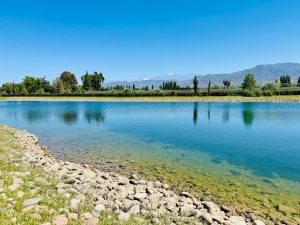


No comment yet, add your voice below!